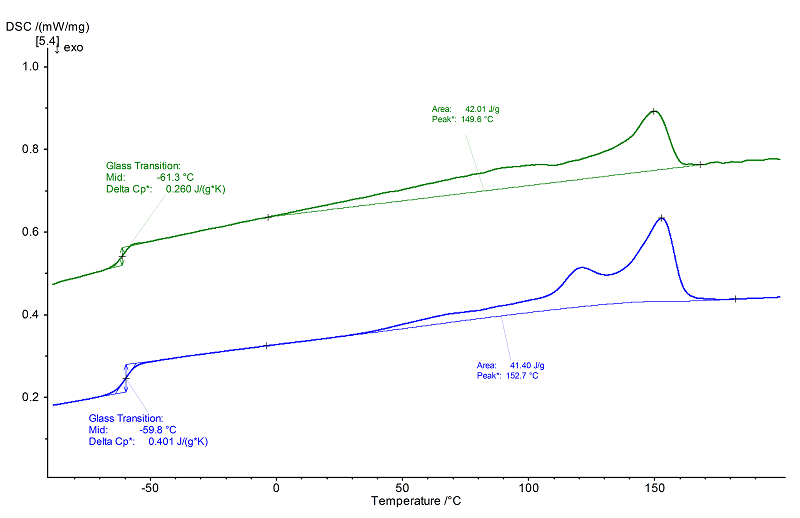TPA: Amide based TPE
- Short Name
- TPA
- Name
- Amide based TPE
- Group
- TPEM - Thermoplastic Elastomers
- General Properties
- Chemical Formula
- Structural Formula
-

Properties
- Glass Transition Temperature
- -70 to 45 °C
- Melting Temperature
- 145 to 200 °C
- Melting Enthalpy
- 20 to 65 J/g
- Decomposition Temperature
- 400 to 420 °C
- Young's Modulus
- 20 to 500 MPa
- Coefficient of Linear Thermal Expansion
- 120 to 240 *10¯6/K
- Specific Heat Capacity
- 2.4 to 2.8 J/(g*K)
- Thermal Conductivity
- 0.2 W/(m*K)
- Density
- 0.99 to 1.10 g/cm³
- Morphology
- Thermoplastic elastomer, copolymer with hard and soft segments
- General properties
- Good resistance to fuels and lubricating greases
- Processing
- Injection molding, extrusion, blow molding
- Applications
- Automotive industry (seals, hoses)
Internet Links
NETZSCH Measurements
- Instrument
- DSC 204 F1 Phoenix®
- Sample Mass
- 11.70 mg
- Isothermal Phase
- 8 min/3 min/8 min
- Heating/Colling Rates
- 10 K/min
- Crucible
- Al, pierced
- Atmosphere
- N2 (40 ml/min)

Evaluation
In the 1st heating (blue), this example of TPA shows a glass transition at -60°C (midpoint) with a step height Δcp of 0.40 J/(g.K). After a broad, but flat exothermal effect with a peak temperature of 32°C (probably a small cold-crystallization) melting of the hard segments occurred in the temperature range between approx. 80°C and 170°C (with a main peak at 153°C and a preceded shoulder at 121°C).
In the 2nd heating (green), an exothermal effect can no longer be seen. Both the glass transition and the endothermal melting range remained. The glass transition temperature (midpoint) occurred at -61°C; the melting range with main peak at 150°C is not that strongly structured like in the 1st heating. The heat of fusion has almost decreased by half compared to the 1st heating (just under 20 J/g compared to 36 J/g).
In the 2nd heating (green), an exothermal effect can no longer be seen. Both the glass transition and the endothermal melting range remained. The glass transition temperature (midpoint) occurred at -61°C; the melting range with main peak at 150°C is not that strongly structured like in the 1st heating. The heat of fusion has almost decreased by half compared to the 1st heating (just under 20 J/g compared to 36 J/g).